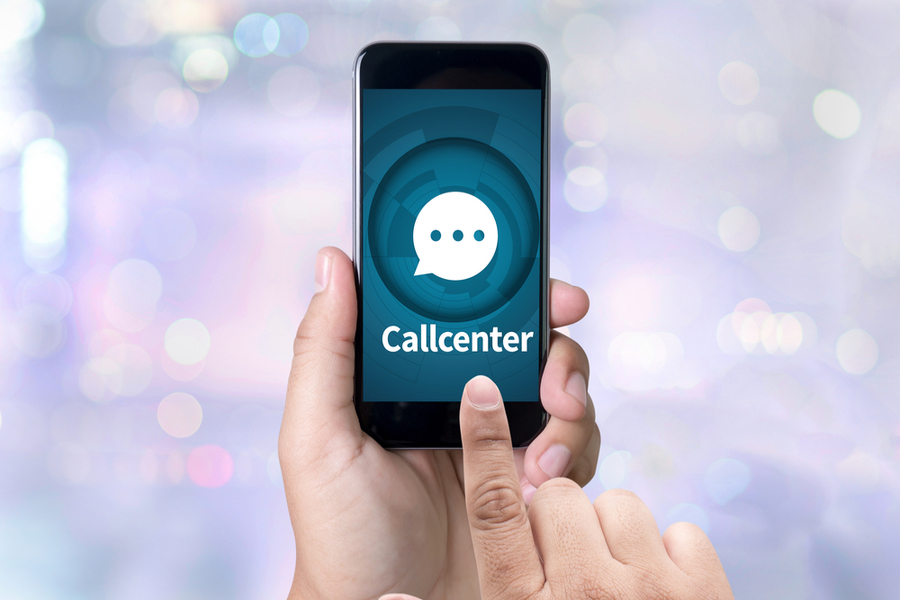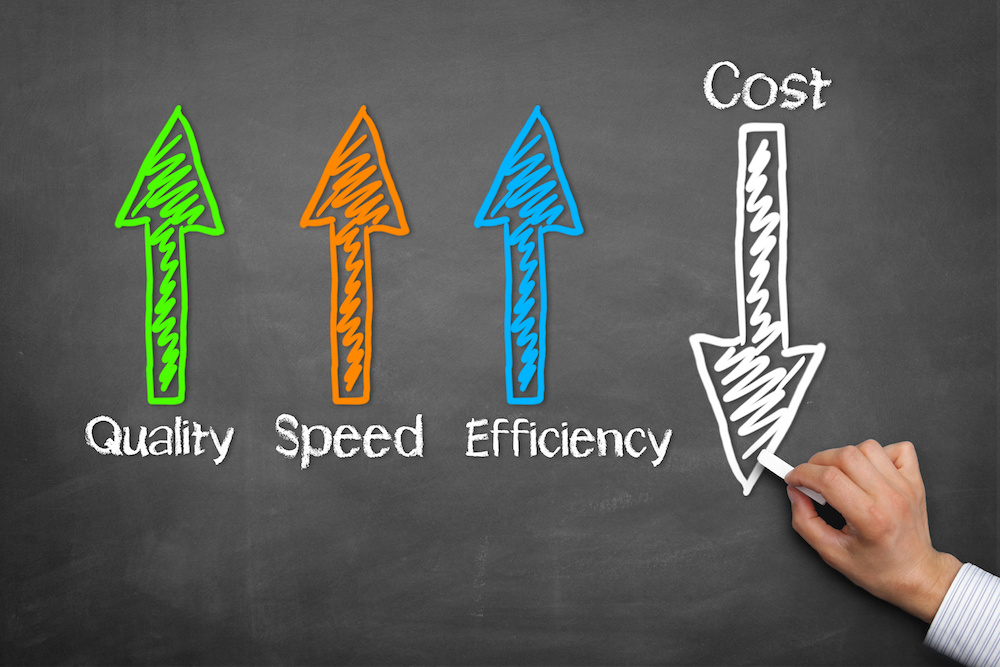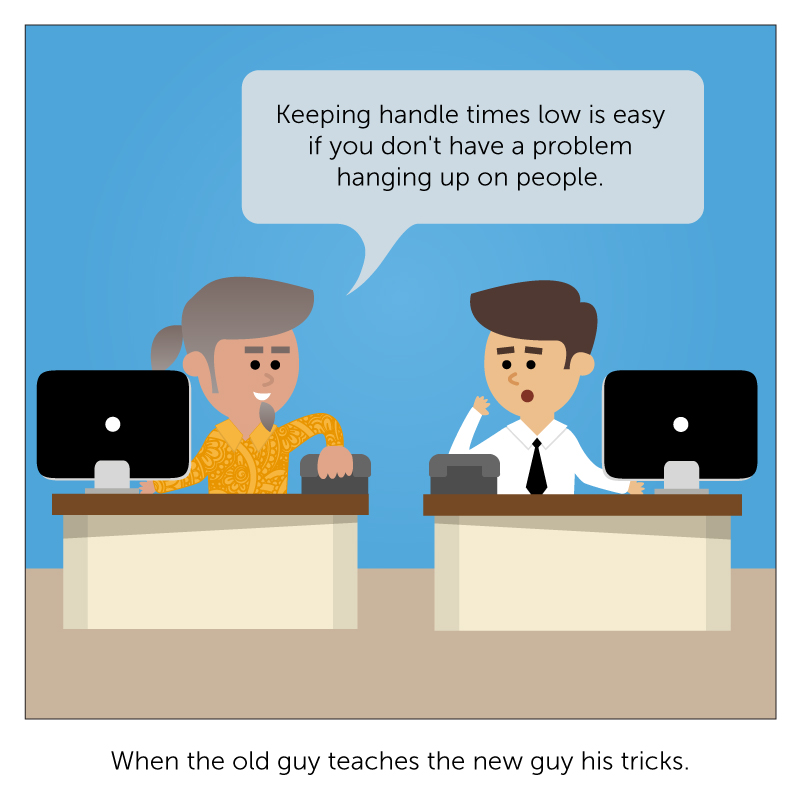Contact Center Unified Communications Best Practice is the fourth in a series on Contact Center Unified Communications
The recent Aberdeen Research we have been citing in this blog series surfaced many of the improved performance metrics companies with contact center unified communications achieve. In this blog, we will dive into the best practices these same companies have implemented that help them achieve those results with contact center unified communications. To see the results they achieved visit our blog “Why Contact Center Unified Communications”.
Contact Center Unified Communications Best Practice #1: Timely and Relevant Insights
Our first contact center unified communications best practice is about empowering your contact center agents with data. Best-in-class companies have figured out that it is important to reduce the time contact center agents spend looking for data. As you can see in the following graphic, there is a significant difference between companies that integrate unified communications within their contact center activities and those who don’t when it comes to three data-related best practices.

Enable agents to create and follow tasks through their desktop
Interacting with a customer often involves creating a follow-up task in other applications for themselves or others in the company. Allowing the agent to easily create a follow-up task and reminder makes the follow-up task more likely to get done, and ensure the customer’s need is met. Almost twice as many companies with contact center unified communications have this capability when compared to those who do not.
Retain customer contact data when transferring between agents
There is nothing more frustrating to customers than to have to repeat their contact information and the reason for their call over and over again. When omnichannel communications and unified communications are well-integrated, customer and interaction data can be retained when customers are transferred between agents. The Aberdeen research shows that 80% more companies retain customer data when transferring calls when they have contact center unified communications.
Updates made on agent desktop can be rolled back to other enterprise systems
We all know being a contact center agent can require a lot of data entry and logging, which detracts from their customer interaction time. So, automating these repetitive tasks whenever possible is important. When contact center systems are open with published APIs for integration with other systems, interactions that your agents have with customers can automatically be logged and any customer data updated in other enterprise applications, such as your Customer Relationship Management (CRM). This saves the agent time and enables the next agent who interacts with that customer to have the most up-to-date customer information at hand. The Aberdeen research shows that 67% of companies with unified communications in the contact center have implemented this type of integration verses only 39% of those who do not.
Best-in-class companies understand that agents with this extra information are going to understand the customer better, and be better able to help the customer on the first contact. Not only do they provide this additional information, but they provide it in an integrated fashion to save the agent from having to struggle with multiple applications on their desktop. Ideally, the agent shouldn’t have any extra steps to log into the CRM to get customer data. The agent app should display the customer information automatically without the agent having to look for it. The agent should see if the person calling is a new prospect or an old customer, and any past interactions – all without spending time hunting for this information.

Not only does this contact center unified communications best practice empower your agents, it also saves your contact center money. Let’s say your company has 200 employees, with an average annual labor cost of $50K each. If you can save 15% of the time they spend updating or looking for data, you will save $1.5 million per year. Clearly the cost of an integrated solution will pay for itself, even as it improves your agent productivity and your customer satisfaction levels.
Contact Center Unified Communications Best Practice Process #2: Monitor Communications to Attain Maximum Results
Best-in-class companies constantly monitor communications. What does this mean? Not only do they record contact center interactions with a Quality Management solution or equivalent, they also analyze the interactions for performance and quality assurance. As it turns out, companies with contact center unified communications do this best practice more than those without. The chart below spells out two related contact center unified communications best practice processes in this area.

Segment and record contact center actions for quality assurance and performance analysis
The Aberdeen Research study shows that companies with unified communications in their contact center are 50% more likely to record contact center actions and segment them for analysis. This indicates these companies are using the integrated technologies to really focus on quality assurance and performance. Many of them may have implemented an integrated Workforce Optimization suite.
Customer care executives review call recordings
In addition, 87% of contact centers with unified communications, have executives that participate in the review and analysis of recordings. This suggests that companies with executives that are committed and engaged in improving their customer service performance have also seen the value and invested in contact center unified communications.
Contact Center Unified Communications Best Practice Process #3: Make UC An Integral Part of the Agent Experience Programs
Everything we’ve talked about is contact center oriented, but to really reap the benefits of unified communications in the contact center, every department within your company has to participate in improving customer care. Our final contact center unified communications best practice is about collaboration with the CIO, the rest of the C suite, IT, and all customer contact functions regardless if they are in the contact center or not. Companies that are showing the best-in-class results have also made unified communications an integral part of contact center agents interacting with rest of the organization.

Collaboration process between contact center executives and CIO
83% of the survey respondents with unified communications in their contact center also have a formal collaboration process with the CIO to manage customer data. This may account for their ability to deliver relevant and timely customer insights to agents.
Create a collaboration initiative
71% of these companies have also created an initiative to align all customer contact functions – contact centers, field sales, marketing, service and support. These teams can use unified communications to collaborate in real-time to stay in sync and solve customer problems. It also contributes to everyone who is customer-facing telling the same consistent story and messages – regardless of the channel, inside or outside the contact center.
In conclusion, all of this contact center unified communications best practice survey data suggests that best-practice organizations with best-practice processes, have seen contact center unified communications as a key ingredient for them to improve their customer care and service metrics. These companies have created a culture where everyone in the enterprise collaborates with each other to solve customer issues, they monitor customer communications for quality, and make sure agents have the customer data and information they need to do their jobs effectively.
In the next blog in this series, we’ll focus on the best-practice technologies companies with contact center unified communications have.
To learn more about the Aberdeen Group research “How to Maximize Customer Satisfaction: The Role of Communication & Collaboration”:
- Listen to the Aberdeen Research on-demand webinar The Business Value of Contact Center and UC Integration
- Download the Aberdeen Research Infographic Maximize Customer Satisfaction through Communication & Collaboration








